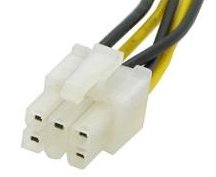Project update 2 of 5
Power Consumption, Power Supply, and Cooling
by Alexander ChemerisFirst of all, I want to say how happy we are to have received our first orders for XYNC as a part of this campaign. All of our XYNC customers so far have been companies and R&D labs with long procurement cycles, and it is thrilling to see some of them coming through on short notice.
In the meantime, backers have raised important questions about the power consumption, power supply, and cooling of XYNC, so we decided to address them in this update.
Power Consumption
XYNC consists of three main units:
- The PCIe switch unit
- The synchronization & frontend unit (classical or 6 GHz RX)
- Several XTRX SDR units (4x for Quadro or 8x for Octo)
The power consumption of the PCIe switch and frontend units is relatively constant at about 10 W for the classical version.
XTRX power consumption varies significantly depending on whether you’re doing RX, TX, or both; on whether you’re doing continuous or burst TX/RX; and on output power, internal gains, bandwidth, digital pre-processing, and a few other parameters. Maximum XTRX power consumption at maximum sample rate and gains is approximately 3 W, which is what we have used for the calculations below:
| Included XTRXs | Maximum Power Consumption | |
|---|---|---|
| XYNC Quadro | 4 | 22 W |
| XYNC Quadro 6 GHz RX | 4 | TBD * |
| XYNC Octo | 8 | 34 W |
| XYNC Quadro Tandem | 8 | 34 W |
| XYNC Quadro Tandem 6 GHz RX | 8 | TBD * |
| XYNC Octo Tandem | 16 | 58 W |
* We have not yet measured the power consumption of the 6 GHz RX frontend. When we do, we will post an update with its power consumption values.
Power Supply
XYNC is powered from two different sources, a PCIe edge connector and a 6-pin 12 V GPU ATX Molex connector:
| PCIe Switch Unit: | PCIe edge connector |
| Synchronization & Frontend Unit: | 6-pin 12 V GPU ATX Molex connector |
| XTRX Units: | PCIe edge connector |
6-pin 12 V GPU ATX Molex connectors, which are typically used to provide power to video cards, look like the following:
In terms of voltages, XYNC uses 3.3 V and 12 V from the PCIe connector and 12 V from the 6-pin ATX connector for the synchronization logic on the synchronization & frontend unit.
Cooling
With tens of watts of power consumption, cooling is important. Output power and other parameters of the LMS7002M chips we’re using begin to degrade at about 80°C. It’s important to keep the ambient temperature significantly below that to provide enough of a temperature gradient for the chips to cool. If you’re interested in phase stability, it’s also important to keep the temperature as stable as possible – temperature changes can noticeably affect phase stability, causing phase differences between the XYNC channels to drift.
For general applications, we recommend at least providing a stable flow of air through the PCIe compartment. For industrial applications, an external box with a passive heatsink might be a good choice. You can connect such a box to the PCIe bus with a PCIe bus extender.
Fairwaves is happy to work with backers on heat dissipation designs that will keep your XYNC operating safely under its target conditions.
